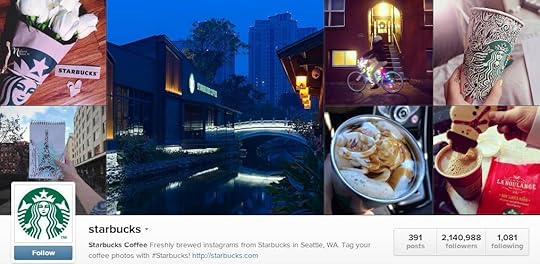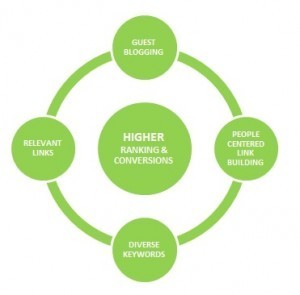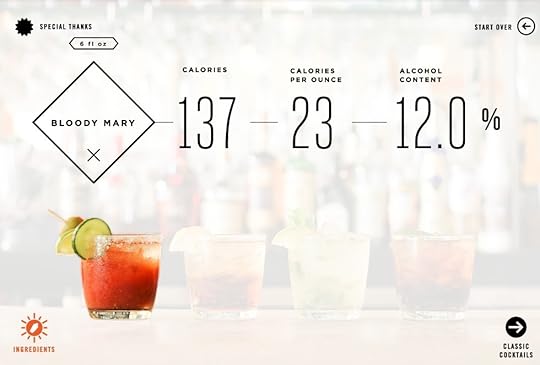Erik Qualman's Blog, page 608
March 19, 2014
Smartphone Apps: Technology in Education

Smartphones and apps have become integrated into our daily lives; in fact Arbitron and Edison have found that over half of mobile phone users keep their device within arm’s reach 100% of the time. This penetration does not stop at adults, teens are notoriously glued to their phones and it’s definitely not uncommon to see a young child attached to a smart phone or tablet.
While there are many people who attribute this to the downfall of face to face interaction, imagination and the countless other social changes that new technologies have brought to the table, apps and smartphones aren’t necessarily all bad.
When a device like a tablet or a smartphone are brought into lessons, engagement increases, children respond better, pay more attention and are genuinely more interested. Although this isn’t the only way to ensure a better response from a classroom it’s a method worth bearing in mind, particularly for certain lessons.
Apps are also great ways to help encourage learning out of the classroom. There are so many free and educational apps that children can play and gain arithmetic or literacy skills with at the same time.
Here are a few examples:
There are countless apps on the Android and Apple store that can be used to help improve arithmetic, counting, fractions and numeracy in general. These are often free and are usually in a game format meaning that young people are able to develop key skills while they have fun. Here are a few that will develop confidence in maths: iMathematics, Kids Learning Numbers, Maths Trainer and Trigonometry Mathematics.
Apps are also a great way of improving language skills, whether it’s English or a second language, there are plenty apps available for a small cost and for free that are designed to help device owners and teachers alike. Apps like Book Creator Free allow younger children to use their tablet to create their own books, encouraging their creativity and helping improve writing skills. In the classroom, The Story Wall is a fantastic way to inspire younger people to get more involved in writing and team building as a story is collectively written by a class. For older students, word games like Scrabble, crossword puzzles and Scramble With Friends are fantastic ways to improve spelling and vocabulary.
A thermal imaging app is perfect for science lessons – while thermal imaging cameras have been accessible on the market for years now they have never been affordable, particularly in schools. FLIR have developed an attachment to the iPhone, that coupled with the app makes a reasonably priced thermal imaging camera for around $350. Although this might seem a little steep for an iPhone app, it is great for lessons on heat loss and heat transfer, is great fun for the children and can be shared around departments within the school to help spread the cost.
Another fantastic bit of ‘add on’ hardware for apple products is the Piano Apprentice, not only does it help students to effectively learn sheet music and teach piano quickly and effectively but it also is a great way to write music.
So, with mobile devices being on hand almost constantly, make sure that younger people have a mixture of applications on their phones and tablet that helps to develop their brain as well as socialize. Remember, it’s also important not to overlook use of technology in the classroom too.
Image credit: lrs08e
[image error]
March 18, 2014
The Master List: 10 Ways to Use Pinterest Secret Boards

During the holiday season a couple of years ago, Pinterest introduced secret boards. They allow people to make pinboards that are completely private, or just shared with a select group of family and friends.
Recently, Pinterest opened the floodgates: now, everyone can make as many secret boards as they’d like.
Keep reading to get some inspiration about cool ways Pinterest could help you work smarter, facilitate plans for the future or even give someone the surprise of a lifetime.
Plot Your Nursery
If you’ve got a little one on the way but aren’t ready to tell the world, that doesn’t require putting nursery design plans on hold. Just use a secret board to add possibilities for décor, baby items and themes.
Compile Insight about Competitors
Knowing your competition is an important part of succeeding in any field. Make it easier to manage those details by placing everything you learn into a dedicated secret board. Not only will that let you gauge what you’re up against, but it’ll give suggestions about how to continually excel in crowded marketplaces.
Plan an Intervention
Watching someone you love struggle with addiction can be heartbreaking. When you’re ready to thoughtfully intervene and suggest he or she get help from a reputable rehab center, start by planning your approach on a secret pinboard. That’ll allow you to carefully determine how to proceed and have the best chance at an ideal outcome.
Prepare to Propose
When you’ve got wedding bells on the brain and are ready to pop the question, it can seem impossible to keep your lips zipped. Enjoy a place to put all your most imaginative and heartfelt proposal ideas by using a secret board. This works especially well if you’re relying on others so all goes according to plan. Each participant can just look at the Pinterest board to more clearly understand his or her role.
Motivate Your Colleagues
A lack of productivity at work can quickly become toxic. If you’ve noticed people around the office are feeling a little burnt out, change the trend with a secret Pinterest board. The privacy component is helpful if you’re worried co-workers don’t want superiors to be under the impression they don’t enjoy their jobs.
Try restricting the secret board so only people from a certain department can access it. Whether filling it with cute pictures of animals or powerful quotes, the board can help you rekindle team spirit.
Collect Ideas Before a Marketing Meeting
 The modern world of marketing is so fast paced and spontaneous that people from the same company might rival each other while dreaming up ideas for the next big concept launch. Keep your ideas concealed from other teams by filling up a Pinterest secret board. Make it collaborative so everyone you’re working with can add things, and then come together to narrow down the possibilities prior to a major meeting with marketing leaders.
The modern world of marketing is so fast paced and spontaneous that people from the same company might rival each other while dreaming up ideas for the next big concept launch. Keep your ideas concealed from other teams by filling up a Pinterest secret board. Make it collaborative so everyone you’re working with can add things, and then come together to narrow down the possibilities prior to a major meeting with marketing leaders.
Focus on Fitness
Getting fit is often a very personal journey, and Pinterest offers many visual aids to help you stay on track. Keep health goals personal by contributing to a secret pinboard. Then, although the results will be evident, your plans will be carefully safeguarded. This method can offer confidence if you’re ready to focus on your body but aren’t ready to talk about your approach with friends or relatives.
Surprise a Friend with a Round-the-World Trip
It’s often hard to reveal surprises, especially if they involve huge, globe-spanning trips. Populate a Pinterest secret board with destinations, attractions and routes. Then, let a friend know he or she is on the way to the trip of a lifetime. The visual focus of Pinterest works particularly well for sparking ideas about where to travel and how to get there.
Bridge the Gap between Remote and On-Site Employees
If your company is working on confidential projects across the miles, a perfect opportunity to collaborate is by using a Pinterest secret board. Pinterest is a great realm for encouraging remote workers to team up with employees who work in your headquarters, especially when they’re tasked with things that can’t yet be shared with the company at large.
Reduce Brainstorming Fears
People often struggle with a hesitancy to express ideas, especially if they’re worried about what other people will think. If that’s a personal issue you often struggle with, use a secret board to brainstorm without limits. Revisit it periodically, and before long, you may realize it’s time to proudly release those ideas you were once afraid to broadcast in a public form.
Hopefully these ten ideas have opened up your perspectives of how secret boards can be used wisely. Although Pinterest launched them to help people keep holiday gift ideas private, they have versatility that goes far beyond that purpose.
Images: Nawal Al-Mashouq | MKHMarketing
[image error]
Getting Familiar with Facebook Marketing Tactics

Treating Facebook like the other major social media platforms can be a costly mistake for companies trying to establish their presence online. Facebook comes with a unique set of features; you must ensure your content strategy is working with these tools, rather than against them. Simply pasting the same social updates across all your social media accounts won’t cut it. Companies must tailor their efforts to the distinctive audiences, features, and advertising options available on Facebook.
How to Gather More Page Likes
Facebook Pages gives you access to their Insights tool once your page accumulates 30 likes. The Insights tool will be essential to growing your page engagement, so it’s important to acquire your first 30 likes as fast as you can.
Initially, you can increase awareness about your Facebook page by notifying followers on other social media platforms and linking to your page from your company website and blog.
After you set up your page, start publishing interesting, useful, or resourceful content right away. Your Insights tool will need at least a week’s worth of data to start building reports on your audience and their content engagement. Monitor your Insights during high usage times throughout the day and popular posts. This information will help you schedule new posts more strategically (based on what times attract the most views and engagement) and predict which topics will receive the most attention.
Examine your Insights from your browser or download the Pages mobile app. If a particular post sparks interest, try to repeat that success by posting similar content. These “measure and respond” techniques can allow you to optimize your social media content strategy, helping your page earn more likes, more quickly.
How to Build an Audience
The Facebook Insights tool continues to play an important role in audience building. Essentially, it allows marketers and business owners to understand fan demographics better. Here are a few metrics to pay attention to:
Where your page likes came from (mobile, desktop, suggestions)
When your fans are online (peak usage days and hours in your time zone)
Gender
Country
City
Language
Once you get a clear grasp on those statistics, you’ll be able to start honing your content toward your audience, based on their demographics. The more focused, relevant, useful, and interesting your content is, the faster your audience will grow.
How to Promote/Boost Posts
Promoted Posts are just one of the features Facebook offers business users. You’ll notice a small “Boost Post” button underneath every post on your page. When you click it, you’ll be able to set your target audience and a post budget. The amount that you spend will directly influence the total reach of the post: $40 has an estimated reach of 7,000 – 20,000 people, while a $200 budget has a reach of 38,000 – 100,000 people.
You can also set the duration of the boost for a maximum of seven days. These boosted posts will be elevated in your fans’ newsfeeds, and you’ll even gain exposure amongst new audiences that fit your demographics.
Tips on Facebook Advertising
Organizations also have the option of creating Facebook Ads, which can direct fans away from Facebook to your website or digital storefront. Make sure you choose the appropriate type of Facebook ad based on the result you want – such as app engagement, conversions, or event promotions.
Fill out the demographics section with data culled from your Insights reports – the more specific, the better. Thoroughly examine the newsfeed and column ad previews, and keep an eye out for typos and graphical issues.
Targeted Facebook marketing campaigns informed by Insights metrics can be immensely successful. Insights is a free utility, so organizations have every excuse to leverage it. Make sure that you are paying attention to these stats as you move forward with boosted posts and ads.
Conclusion
Facebook is the most ubiquitous website on the planet. More people are familiar with it – and use it – than any other website. Clearly, it’s an advertiser’s dream. With advanced targeting options and intuitive reporting and insights, Facebook is a powerful tool for any marketer.
[image error]
March 14, 2014
Why is Your Social Media Dying a Slow Death?

 Running a small business comes with many responsibilities on a daily basis.
Running a small business comes with many responsibilities on a daily basis.
With that in mind, where do you rank social media in terms of its importance in promoting your company? In many cases, business owners have a hard trouble answering that question, a sign that they’re missing out on potential business.
Whether you are new to running a business or have been in charge for a number of years now, the social aspect of overseeing and promoting your brand can never be overlooked.
So, why then are you not feeling the love from current and potential customers when it comes to your social media efforts?
Start With Consistency and Relevancy
Among the things you need to focus in on:
1. Consistency – If you are tweeting, sharing, and pinning only off and on at best, there is your first big problem. Your social media efforts need to be consistent, showing consumers that you are serious about social networking in the first place. If you are not spending enough time with social media, is it because your team doesn’t have the time or you do not want to spend the money to outsource such needs? Whichever reason it may be, you need to rectify it, allowing you to be a constant presence in the world of social media;
2. Relevancy – Whether you tweet or share daily, how relevant are the posts that you send out? If you’re viewed as essentially a spammer, your social media efforts are basically null and void. Your posts should be from your own business or links to relevant information that consumers can use pertaining to the industry you are in. Provide them with data that will help them in their browsing and buying decisions, making them look at your company as an authority in the respective field;
3. Too many hands in the cookie jar – Some companies allow any and all of their employees to tweet, share, pin etc., still others leave it to one person or what is essentially the marketing team in place. Whichever formula you end up choosing, make sure your social media efforts have a consistent voice. If it sounds like way too many people are posting on behalf of your business, it could get confusing as far as putting out a consistent message. If you do permit many to use social media at work, make sure everyone understand your company’s social media policy. If they don’t, it could lead to embarrassing and negative encounters with consumers and other businesses;
4. Overreaching – Finally, are you trying to be too many things to too many different people? In an effort to reach a wider audience, you might be spreading your efforts too thin across the board. Some companies have a presence on Facebook, Twitter, Google+. Pinterest, and some of the other well-known sites, while others would rather focus in on one, possibly two of the top sites for maximum results. If you are on too many sites, it actually can be a bad thing in your efforts to reach people. Every few months, it is wise to do a social media review, analyzing your traffic, allowing you to see what does and does not work. Also, not a bad idea to do an online review of your business with sites such as Reputation.com and others that can gauge what online viewers think of your company’s overall online reputation.
As a business owner, what have you found to be productive and not so productive when it comes to promoting your company on social media?
Photo credit: momentfeed.com
[image error]
March 12, 2014
Insta-Brands: Instagram for Brands

With 150 million active users contributing a staggering 1.2 billion Likes per day, Instagram is a social media tool that brands simply cannot afford to shun. It is one of the fastest growing social networks, having amassed that impressive number of users since its launch just over three years ago, in October 2010. Now, an average of 55 million photos are uploaded every day, and this too is on the increase.
Visual marketing is an invaluable tool for companies and there has been a recent surge of activity in this area, with brands making the most of image-based content strategies. The advantages are clear and although the old adage that a picture tells a thousand words is actually a slight exaggeration – Facebook revealed that an image receives 39% more interaction than a written representation of the same thing – the sentiment is certainly true.
Pictures bypass language barriers and allow brands to target international audiences and bring them together. Uniting multilingual cultures through the power of imagery is an exceptionally worthwhile enterprise that allows companies to broaden their appeal; this is emphasised by the fact that over 60% of Instagram users reside outside of the US. Images offer brands the chance to connect with their audience’s emotions and convey personality through their use of the visual medium.
This is something that is absolutely critical for brands, and using Instagram gives them the opportunity to define or re-define themselves, just by the photos they post. In the same way that companies must pay careful attention to the style and tone of their written site content, they must also consider the message and personality that they want to convey with their images. Instagram offers brands the chance to assume a particular tone and, whether it be deep, quirky or sensitive, they can tailor their uploads to represent themselves online (or attempt to) however they wish.
This focus on marketing a brand’s personality, rather than its products, has led to a more indirect and creative approach from companies, which is perfectly suited to the Instagram platform. For many, it’s an alternative outlet that offers the opportunity to be more expressive, imaginative and inventive than they can be through their more formal channels. For brands that feel limited by the restrictions of their own site, Instagram can be a perfect solution.
A great example of this comes from Burberry. In their Instagram bio, they describe themselves as a brand with “a distinctly British attitude”, which is something they clearly want to make the most of. As well as uploading more traditional photos of their products and fashion shows, Burberry also regularly post iconic shots of London. While these have nothing whatsoever to do with their product line, they help to emphasise Burberry’s Britishness and communicate the personality of the brand. The image below, as well as being particularly striking, accumulated comments from users in multiple languages and over 30,000 Likes.
 Starbucks are one of the most popular brands on Instagram, and their strategy is slightly different. While they do occasionally promote their new varieties and flavours, most of their photos are geared towards portraying their brand in a personal, emotional context. They emphasise the people, locations and stories associated with their customers, while simultaneously including their logo in many uploads to promote the Starbucks brand.
Starbucks are one of the most popular brands on Instagram, and their strategy is slightly different. While they do occasionally promote their new varieties and flavours, most of their photos are geared towards portraying their brand in a personal, emotional context. They emphasise the people, locations and stories associated with their customers, while simultaneously including their logo in many uploads to promote the Starbucks brand.
 Accumulating the sort of interaction and following that these companies have is challenging though, to say the least; there are currently just thirty-six brands on Instagram with more than 1 million followers. Based on this, as well as the number of posts using their Hashtags, Nitrogram 50 have compiled a list of the top ten most popular brands on Instagram:
Accumulating the sort of interaction and following that these companies have is challenging though, to say the least; there are currently just thirty-six brands on Instagram with more than 1 million followers. Based on this, as well as the number of posts using their Hashtags, Nitrogram 50 have compiled a list of the top ten most popular brands on Instagram:
Rank
Account
Followers
Posts on Hashtag
1
Nike
3,634,131
23,075,267
2
Starbucks
2,139,274
9,820,421
3
Adidas Originals
1,473,739
5,677,302
4
NBA
2,104,003
3,896,416
5
Topshop
1,873,200
3,610,017
6
Forever 21
2,834,622
2,187,894
7
Vans
1,105,768
8,271,727
8
GoPro
1,739,485
2,185,085
9
Michael Kors
1,856,171
1,941,727
10
NFL
1,262,003
2,609,407
In terms of followers and Hashtag posts, Nike is clearly the platform leader, and much of this success could be attributed to the brand’s engaging nature and interactivity. The recent Nike PHOTOiD campaign encouraged users to design their own trainer and, combined with a photo background from their Instagram account, submit it for everyone else to rate.
 The results that this kind of campaign can bring about are absolutely crucial for companies and illustrate why Instagram is such an appealing social network for them to invest in. It gives brands the opportunity to engage with their audience on a personal level, showing real emotion and personality, and allowing their users to respond in the same way. From company events to staff birthdays and from inspirational quotes to appealing, exclusive competitions, Instagram offers the opportunity to branch out beyond the standard corporate image of a brand and allow it to truly interact with its customers. And, with active users contributing over 13,000 Likes per second, Instagram provides brand engagement that the best companies simply cannot afford to miss out on.
The results that this kind of campaign can bring about are absolutely crucial for companies and illustrate why Instagram is such an appealing social network for them to invest in. It gives brands the opportunity to engage with their audience on a personal level, showing real emotion and personality, and allowing their users to respond in the same way. From company events to staff birthdays and from inspirational quotes to appealing, exclusive competitions, Instagram offers the opportunity to branch out beyond the standard corporate image of a brand and allow it to truly interact with its customers. And, with active users contributing over 13,000 Likes per second, Instagram provides brand engagement that the best companies simply cannot afford to miss out on.
[image error]
March 11, 2014
5 Brands that are Crushing Social Media Marketing

What makes one brand’s social media strategy go viral and another brand’s fall flat? There’s no perfect formula for becoming masters of the social marketing sphere, unfortunately, so sometimes it’s hard to figure out why a company is crushing it. Timing – think Oreo’s dunking in the dark tweet from the Super Bowl 2013 blackout – is one factor. Trendspotting – like Skittle’s use of the doge meme – is another must-have piece of the social puzzle. An already engaged fan base certainly doesn’t hurt.
Big brands have embraced the social sphere in a big way because when you get the big wins you can reap rewards that money can’t buy. Extreme brand loyalty. Advertising that is almost completely customer driven and therefore virtually free. Messages that spread beyond your usual demographic. And more. We can all learn a thing or two from the brands that are killing it on Facebook, Twitter and elsewhere. Here are five to follow to ASAP:
1. Starbucks
With more than 36 million Facebook fans, almost 6 million Twitter followers, and more than 2 million Instagram followers this brand is definitely doing something right. First there are the discounts, regularly shared and tweeted just because. Then there’s the fact that the company was using social media to run its promotions long before other brands figured out how to set up a Facebook page.
But where Starbucks has taken gold is in its innovative Tweet-a-Coffee (@tweetacoffee) campaign that lets anyone willing to connect their Twitter account to Starbucks send a coffee – well, the value of a coffee– to a friend. The still-in-beta campaign is still around and Starbucks has now linked tens of thousands of Twitter IDs to customer IDs.
2. T-Mobile
Once an underdog, this brand has been dominating the social landscape. T-Mobile deals are part of it, with the company’s Uncarrier campaign playing a starring role. From #breakupletter to #unleash to the straightforward #nocontract, it was fans and followers who did the heavy lifting when it came to spreading the no contract message. Word of mouth has paid off for T-Mobile, which added a significant number of new subscribers in 2013 – a large percentage of which were more lucrative contract customers.
3. Target
This brand has been at the top of its game for years now with a strong presence across channels. Apps? The company has had them in spades with wedding registry apps, apps for bargain hunters and more. But where Target really wins is in its use of blogger voices for strategic on-the-ground and, more importantly, unpaid campaigns that turn people who already shop at Target and have platforms thousands of readers strong into brand advocates whose praise is more valuable than any traditional ad.
4. Ford
One hundred free loaner Fiestas translated into huge buzz thanks to the monumentally successful Fiesta Movement campaign. Thousands of people submitted entries to be chosen as digital influencers, generating plenty of buzz from the get-go, and those chosen were given free gas and insurance, a video camera and monthly challenges to complete (on video, of course) with Ford on the receiving end of all that juicy social cred. The campaign generated 6.2 million views on YouTube, 40 million Twitter impressions and 750,000 views on Flickr – putting Ford in front of a younger generation of consumers in the process.
5. Subway
This brand wins simply for the sheer variety of campaigns across platforms it has undertaken in the past – and for the subsequent engagement it receives as a result. The company’s “Flavorizer” app let customers build and name custom sandwiches that were sometimes in the running to become official. Project Subway had fans of the brand building dresses and other couture creations from Subway restaurant wrappers and napkins to kick off its $5 Any Footlong offer in September 2013. Then just recently the company created 70+ super sharable gifs as part of its #januANY campaign and the likes, shares, tweets and retweets came rolling in.
[image error]
Using Interactive Infographics to Boost Social Sharing

Infographics are one of the most effective ways to engage an audience and generate valuable social shares and links. As the trend for infographics grows, so do the options available when it comes to creating them. Interactive elements, or even entirely interactive data visualisations, have proven to be both popular and effective at building natural links online.
With the recent shift in the power of guest blogging, many SEO’s have turned to making genuinely compelling content in the form of data visualisations. This move towards interactive content also stems from the fact that as more companies create infographics, the more saturated their platforms become.
The ever increasing consumption of online resources through tablets and other mobile devices also means a change in the way users want to receive data. Interactive content is a step in the right direction to keep up with this.
Creating Compelling Infographics
“The more useful content you have, the greater the chances someone else will find that content valuable to their readers and link to it” is wise advice from Google Webmaster Tools. It boils down to the simple idea that if you create something interesting and and market it well, people are more likely to share it.
With interactive infographics, engagement is much easier to achieve since the viewer must perform an action such as scrolling a mouse or clicking for content to appear. Here’s a look at what brands and agencies are doing right now and why it’s working for them:
Map of the Dead
Maps are one of the most popular styles of interactive data visualisations and they often allow the user to personalise their experience by picking a location they know. Map of the Dead allows users to enter their own postcode to see which locations would have resources to help them survive a zombie apocalypse. There is even a game that can be downloaded too! This fun and stylish piece of content has racked up over 13K of shares.
Cyclemon
Whilst the aim of interactive data visualisations is often to provide information, some creators have utilised fantastic design to make compelling pieces without including any data at all. Cyclemon is a perfect example of this, with its fun vector scrolling infographic. Even a simple design like this has created over 6K of Facebook shares and hundreds of tweets.
The History of Formula 1
The History of Formula 1 created by Toolorders is a wonderful example of a scrolling infographic. This is a great way to include a large volume of data without overwhelming the reader or overcrowding the layout. Game and cartoon style pieces like this are enhanced dramatically by the option to include animation, making them appear even more like the real thing.
The Enlightened Happy Hour
The Enlightened Happy Hour from Column Five combines photographic images with data for a great in-depth look at the contents of cocktails. A brilliant example of an infographic where the user controls what information they see. Showing variations of the same data (in this case it’s the calorific content of different drinks) can also look repetitive and uninteresting in a static infographic. Displaying the data in this way breaks it up nicely.
[image error]
March 10, 2014
FREE BOOK: Get Your Copy of What Happens in Vegas Stays on YouTube

Erik Qualman’s new book is What Happens in Vegas Stays on YouTube and is an excellent resource on producing and protecting your digital reputation. Today through Wednesday (3/10-12) you can get a free copy on Amazon. See below on instructions for reading it on any device.
Link to download your free copy: http://amzn.to/1g0bKuK
How to read a Kindle book on any device: http://www.amazon.com/gp/feature.html?docId=1000493771
The promotion is for a limited time but supplies are NOT limited, so please help us spread the word to your friends, family and colleagues. The message in this book is an important one, and the more people that can participate in this exciting promotion the better. Think about it, the more of your friends and followers that read this, the less obnoxious posts you might see on social media!
Are you on Twitter? Click here to tweet about the promotion, and you’ll get street cred for being in the know about all the cool promo offers

[image error]
March 9, 2014
Changing Faces: 5 Major Tech Companies with New CEOs

Tech companies are on the rise — a rapidly growing market for both existing business and startups. According to this study, online-based companies accounted for 21 percent of GDP growth while becoming a catalyst for new jobs. But with this tremendous growth, it’s also the sector where many new businesses try and fail.
While there are many factors to a company failing, many experts agree that even the greatest business will fail if under the wrong management. Fortunately, many tech companies are making changes for the better and thriving from a little shift in leadership.
Hewlett-Packard

Image via Flickr by megwhitman2010
Former eBay executive Meg Whitman took control of Hewlett-Packard back in September 2011. When Whitman took over, the company was in bad shape and only getting worse. The Former CEO, Leo Apotheker, was kicked out after an 11-month tenure due to poor performance. He left quite the mess to clean up: Stocks had gone down 44 percent and the overall revenue staggered at a dismal $30 billion, with profits on a steady decline.
Now, under the leadership of Whitman, the company is starting to recover from its previous loses. Though profits are still down, the numbers aren’t as massively negative as in years past, and the HP stock has already grown by 7 percent. Whitman is still confident that things will continue to look up, and urges investors that “This is a multi-year journey. We have a long way to go.”
Larry Page, one of the original co-founders of Google, took the company back from Eric Schmidt in April 2011. Since then, Google shares have skyrocketed by 48 percent. He was able to accomplish this by first closing services that weren’t profitable and had led to many acquisitions, including the $12.5 billion buy-out of Motorola.
Now, Google controls the majority of search and mobile advertising markets and Android continues to dominate the global smartphone market. Since Page’s comeback, Google’s revenue has increased 31 percent with a spike of 14 percent in the first quarter of 2013 — and that’s just the beginning. With upcoming projects like Google Glass, self-driving cars, and even rumor of launching retail stores, Google’s future is bright and wealthy.
Apple

Image via Flickr by deerkoski
Though Tim Cook was officially made CEO of Apple on Aug. 24, 2011, most say that he didn’t step into the position until former CEO, Steve Jobs, passed away Oct. 5, 2011. From that day, Cook has held the reins and has led Apple through some of record-breaking years. Apple shares reached an all-time high of 702.1 on September 2012, only to take a decline of 36 percent as of May 2013.
Despite this decline, shares are still up compared to the day Cook stepped up to the plate. Despite the criticism Cook has faced, he’s still considered one of the most influential voices in the world of tech and whom many aspire to emulate. With education, experience, and a strong network, anyone can prepare for success and follow in his footsteps
Yahoo
A former Google veteran, Melissa Mayer took control of Yahoo in the summer of 2012. Since then, she has managed to revamp the company’s image, update mundane products, and acquire 12 high-profile businesses including companies such as Tumblr and Qwiki. In less than a year, she has managed to raise the company’s stock by an impressive 68 percent, hitting $26.3 per share as of May 31, 2013.

Image via Flickr by University of Michigan’s Ford School
The oldest of the new CEOs, Dick Costolo gained control of one of the largest social media sites, Twitter, back in 2010. The former CEO, Evan Williams, stepped down to “focus on product strategy,” leaving Costolo at the helm. During his time as CEO, he has been praised for his ingenuity and influence. In 2011, he was appointed to the National Security Telecommunications Advisory Committee, where he serves alongside other big names in the tech community such as Microsoft’s Scott Charney and MacAfee’s David Dewalt. TIME Magazine has referred to Costolo as one of the 10 most influential US Tech CEOs.
These are just a few examples of how the under the right leadership, both failing and thriving companies can excel. There are hundreds of businesses out there looking for the right person to lead them into success.
[image error]
March 8, 2014
5 Link-building Linchpins for 2014

Introduction
Link building is still the bees’ knees of SEO, contrary to ravings from prophets of doom who are laboring to emphasize the importance of indicators other than links and the threat posed by successive Google updates. If you attach too much weight to the lunacy, the changes of you being spooked by Google updates to the point of jumping ship are quite high.
While you would be drowning in your fear, others will be cashing in on link building like never before. Hence, it is advisable to engage in some soul searching, exorcise black hat practices, buckle up and take on the New Year with a conglomeration of a new breed of refined and new tactics. Obviously, you had to brave numerous changes during 2013 and it would be foolhardy to wish 2014 to be any different.
1. Renounce the Evil Ways
The first and maybe long overdue initial step is to repent and renounce bad SEO practices. This does not only mean that you have to stop dead in your tracks but go back to undo all the traces of trickery and deviousness.
As long as you harbor bad links, they will keep eating away your good efforts and intentions on every other front. An exhaustive link audit and the disavowing and ridding of bad links are the first order of business in 2014.
If your website has low-quality links, get rid of them IMMEDIATELY! Contact the webmasters to get the links removed or use Google’s Disavow Tool for auto removal. However, in Google’s words, even after using the tool, you still need to make every effort to clean up unnatural links pointing to your site.
2. Put People First
 Much of the link-building efforts and tactics have been tantamount to going around in circles. To put it bluntly, it is like the classic case of a dog chasing after its tail. At the end of it all, what you need is a good reputation and conversions both of which can never accrue from focusing on machines alone.
Much of the link-building efforts and tactics have been tantamount to going around in circles. To put it bluntly, it is like the classic case of a dog chasing after its tail. At the end of it all, what you need is a good reputation and conversions both of which can never accrue from focusing on machines alone.
The Way to Go:
Link to relevant resources.
Use long-tail anchor text to integrate links into articles.
Prioritize sites that enjoy organic traffic and a healthy social media following.
The content must address the needs of the visitors.
Link building is all about “quality” and not “quantity”.
3. Don’t Drown Readers in the Same Tired Keywords
The focus of future SEO is unapologetic about the need to have relevance in the links that you put up. It can never be over-emphasized that it’s no longer a numbers game. Consider linking content to your site only if the end result is going to gift readers with a wider perspective of the issues under discussion.
The keywords must be related, NOT similar!
 A simple test of this requirement before you do anything is to compare the keywords. If the links pointing to your site have the same keywords then hold your horses, reset and go back to the drawing board. It’s a huge pit and it would be quite foolish to continue putting one foot in front of the other despite the bold ‘unnatural links’ warning sign. The need for diversity and relevance in links is explained in this interesting read on link building techniques.
A simple test of this requirement before you do anything is to compare the keywords. If the links pointing to your site have the same keywords then hold your horses, reset and go back to the drawing board. It’s a huge pit and it would be quite foolish to continue putting one foot in front of the other despite the bold ‘unnatural links’ warning sign. The need for diversity and relevance in links is explained in this interesting read on link building techniques.
4. Move to Guest Blogging
If you have not already started guest blogging, you need to wake up, smell the coffee and quit dwelling in cloud cuckoo land! Write for other blogs as a guest who intends to share ideas, knowledge and expertise with a wider audience.
 Guest blogging provides a great opportunity to:
Guest blogging provides a great opportunity to:
Share your expertise with a large audience.
Invent yourself as a brand with the real chance of commanding respect.
Enhance your professional network.
Obtain high value links.
5. Embrace SEO Tools
You can only better strategize for tomorrow if you know and accept the pros and cons of your previous, if not current, strategy. There is a full arsenal of SEO tools at your disposal that are not there for entomologists!
 Tools such as SEMRush, Majestic SEO etc. help in revealing your current backlink profile so that you can better craft a workable way forward.
Tools such as SEMRush, Majestic SEO etc. help in revealing your current backlink profile so that you can better craft a workable way forward.
Other tools exist for monitoring the progress of your new strategies and efforts as you go deeper into 2014.
A Word of Advice: Keep Your Eyes On The Ball!
In 2014, you need to work towards establishing that million-dollar connection with your readers. Quit running in circles around Panda, Hummingbird and other Google updates, and for once focus on the “needs” of your target customers. Management by crisis is a futile exercise that has to adapt every time there is a new Google update. Instead adopt a practice that will endure in spite of how many updates come and whatever their nature.
[image error]











